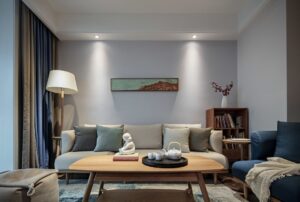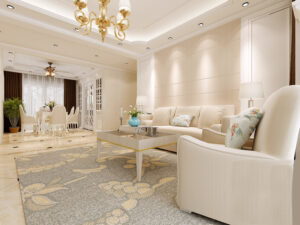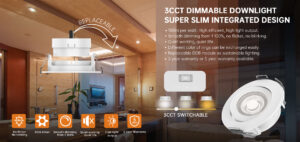Human-Centric Lighting (HCL) revolutioniert die Beleuchtung unserer Welt und verlagert den Fokus von der bloßen Sichtbarkeit hin zur Priorisierung von Gesundheit und Wohlbefinden. Dieser innovative Ansatz der Lichtgestaltung ahmt natürliche Tageslichtmuster präzise nach und berücksichtigt die tiefgreifenden physiologischen und psychologischen Auswirkungen von Licht auf den Menschen. HCL-Systeme gehen über die reine Beleuchtung hinaus und zielen darauf ab, unsere innere biologische Uhr zu synchronisieren, unsere Stimmung zu verbessern, kognitive Funktionen zu fördern und letztlich unsere allgemeine Lebensqualität zu steigern. Von Gesundheitseinrichtungen und Bildungseinrichtungen bis hin zu Privatwohnungen und belebten Büroräumen – die Integration von HCL verwandelt Umgebungen in Räume, die die menschliche Vitalität und Leistungsfähigkeit aktiv unterstützen. Bei genauerer Betrachtung der Kernprinzipien, Anwendungen und neuesten technologischen Fortschritte von HCL wird deutlich, dass es bei diesem Paradigmenwechsel in der Beleuchtung nicht nur um besseres Sehen geht, sondern um ein besseres Leben.
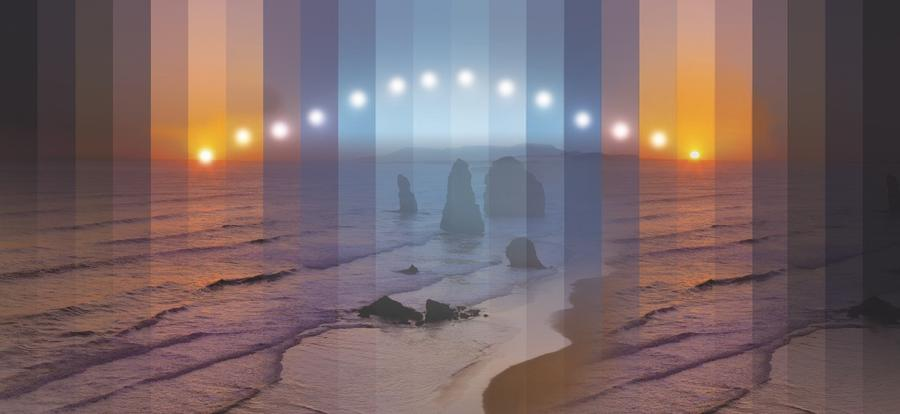
Die Entwicklung einer menschenzentrierten Beleuchtung
Traditionelle Beleuchtungssysteme konzentrierten sich in der Vergangenheit auf Funktionalität und Ästhetik und übersahen dabei oft den entscheidenden Einfluss von Licht auf unsere Gesundheit. Jüngste wissenschaftliche Fortschritte haben jedoch die komplexen Auswirkungen von Licht auf unseren zirkadianen Rhythmus, die Hormonproduktion, die Stimmungsregulierung und die kognitive Leistungsfähigkeit aufgezeigt. Dieses wachsende Verständnis hat die Entwicklung von HCL vorangetrieben und einen Übergang von statischen, einheitlichen Lösungen ermöglicht. Lichtlösungen zu dynamischen Systemen, die die natürlichen Schwankungen des Tageslichts nachbilden. Frühe Anwender erkannten, dass sie durch die gezielte Steuerung der Farbtemperatur und Intensität von künstlichem Licht die menschliche Physiologie und Psychologie positiv beeinflussen können. Heute ist HCL ein Beweis für die Leistungsfähigkeit interdisziplinärer Zusammenarbeit, die Erkenntnisse aus Lichtwissenschaft, Chronobiologie und Innenarchitektur integriert, um Umgebungen zu schaffen, die Wohlbefinden und Produktivität fördern. Während wir die komplexen Auswirkungen von Licht auf den menschlichen Körper weiter entschlüsseln, wird HCL zweifellos eine immer wichtigere Rolle bei der Gestaltung der Räume spielen, in denen wir leben, arbeiten und uns erholen.
Grundprinzipien der menschenzentrierten Beleuchtung
HCL-Systeme basieren auf drei Kernprinzipien, die jeweils darauf ausgelegt sind, die positive Wirkung des Lichts auf die menschliche Gesundheit und das Wohlbefinden zu maximieren:
Synchronisierung des zirkadianen Rhythmus
Der Grundstein von HCL ist seine Fähigkeit, unseren zirkadianen Rhythmus zu synchronisieren, die natürliche 24-Stunden-Uhr des Körpers, die Schlaf-Wach-Zyklen, Hormonausschüttung und andere wichtige physiologische Prozesse reguliert. HCL-Systeme erreichen dies durch die dynamische Anpassung Farbtemperatur und Intensität im Tagesverlauf und ahmen so den natürlichen Verlauf des Sonnenlichts nach. Beispielsweise können HCL-Systeme morgens ein kühles, bläulich angehauchtes Licht ausstrahlen, ähnlich dem belebenden Licht der Morgendämmerung, das die Melatoninproduktion hemmt und die Wachsamkeit fördert. Im Tagesverlauf verschiebt sich die Farbtemperatur allmählich in Richtung wärmerer, orangefarbener Töne und signalisiert dem Körper damit, sich auf Entspannung und Schlaf vorzubereiten. Indem künstliches Licht auf unseren angeborenen Biorhythmus abgestimmt wird, kann HCL die Schlafqualität verbessern, das Energieniveau tagsüber steigern und das allgemeine Wohlbefinden verbessern. Studien haben gezeigt, dass eine konsequente zirkadiane Ausrichtung zu weniger Stress, einer verbesserten Stimmungsstabilität und sogar einem geringeren Risiko für chronische Erkrankungen führen kann.
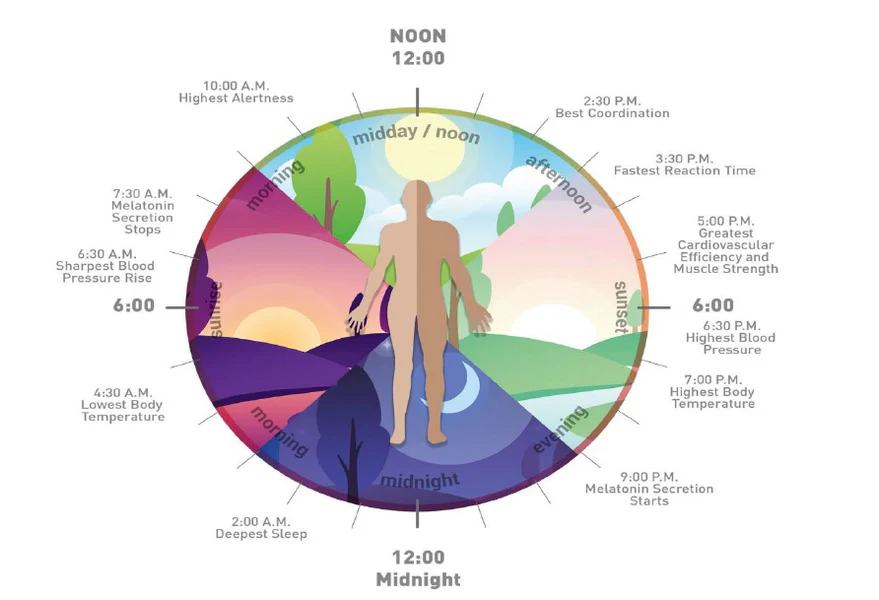
Personalisierte Beleuchtung
Da individuelle Bedürfnisse und Vorlieben unterschiedlich sind, bieten HCL-Systeme personalisierte Lichterlebnisse, die auf spezifische Aktivitäten, biologische Bedürfnisse und Benutzerpräferenzen zugeschnitten sind. Die Integration von intelligente Beleuchtungstechnologien, wie beispielsweise drahtlose Steuerungen und hochentwickelte Sensoren, ermöglichen es Nutzern, Beleuchtungsparameter wie Helligkeit, Farbtemperatur und -richtung fein abzustimmen, um optimale Umgebungen für unterschiedliche Aufgaben und Stimmungen zu schaffen. Beispielsweise bevorzugt jemand, der an einem detailorientierten Projekt arbeitet, möglicherweise helles, fokussiertes Licht mit einer kühlen Farbtemperatur zur Förderung der Konzentration, während jemand, der abends ausspannt, gedämpftes, warmes Licht zur Förderung der Entspannung bevorzugt. Moderne HCL-Systeme können sogar die Vorlieben der Nutzer im Laufe der Zeit erlernen und die Beleuchtungseinstellungen automatisch basierend auf ihrem bisherigen Verhalten und den Umgebungsbedingungen anpassen. Dieser Grad der Personalisierung stellt sicher, dass die Beleuchtung nicht nur funktional ist, sondern auch zu individuellem Komfort, Produktivität und allgemeiner Zufriedenheit beiträgt.
Dynamische Lichtsteuerung
HCL-Systeme bieten eine dynamische Lichtsteuerung und ermöglichen Echtzeitanpassungen basierend auf Nutzerverhalten, Umgebungsbedingungen und Tageszeit. Diese Flexibilität stellt sicher, dass sich die Beleuchtung an veränderte Bedürfnisse und Aktivitäten anpasst und so eine reaktionsschnelle und unterstützende Umgebung schafft. Wird ein Raum beispielsweise aufgrund bewölktem Wetter dunkler, kann ein HCL-System die Helligkeit automatisch erhöhen, um ein optimales Beleuchtungsniveau aufrechtzuerhalten. Ebenso kann das System die Beleuchtung dimmen oder ausschalten, wenn Sensoren erkennen, dass ein Raum nicht belegt ist, um Energie zu sparen. Die dynamische Lichtsteuerung ermöglicht zudem die Erstellung individueller Lichtszenen für verschiedene Aktivitäten wie „Lesen“, „Arbeiten“ oder „Entspannen“. Diese Szenen lassen sich einfach per Knopfdruck oder Sprachbefehl aktivieren und bieten Nutzern eine nahtlose Kontrolle über ihre Lichtumgebung. Durch die Anpassung an veränderte Bedingungen und Nutzerbedürfnisse erhöht die dynamische Lichtsteuerung den Komfort, fördert die Energieeffizienz und sorgt dafür, dass die Beleuchtung stets zu einer positiven und produktiven Umgebung beiträgt.
Der Einfluss menschenzentrierter Beleuchtung auf die psychische Gesundheit
Human-Centric Lighting (HCL) hat sich als entscheidender Faktor zur Verbesserung der psychischen Gesundheit erwiesen, indem es natürliche Tageslichtmuster simuliert. Dieser Ansatz fördert nicht nur das körperliche Wohlbefinden, sondern spielt auch eine entscheidende Rolle bei der Regulierung der Stimmung, der kognitiven Funktionen und der allgemeinen psychischen Gesundheit. Hier ist ein genauerer Blick auf die Auswirkungen von HCL auf die psychische Gesundheit:
Regulierung des zirkadianen Rhythmus
HCL-Systeme ahmen den natürlichen Verlauf des Tageslichts nach, indem sie Farbtemperatur und -intensität im Tagesverlauf anpassen. Dies trägt zur Regulierung der inneren Uhr des Körpers bei, was für einen gesunden Schlaf-Wach-Rhythmus unerlässlich ist. Eine korrekte Regulierung des zirkadianen Rhythmus ist mit einer verbesserten Stimmungsstabilität und reduzierten Depressionssymptomen verbunden. Gleichmäßige Lichtmuster, insbesondere morgens, unterdrücken die Melatoninproduktion und fördern so Wachheit und Energie. Abends fördern wärmere Lichttöne die Melatoninausschüttung und bereiten den Körper auf den Schlaf vor. Diese Synchronisierung ist entscheidend für Menschen mit Schlafstörungen oder unregelmäßigen Arbeitszeiten. Weitere Forschungen in der Chronobiologie untermauern diese Erkenntnisse und betonen die Bedeutung des richtigen Zeitpunkts der Lichteinwirkung für die psychische Gesundheit.
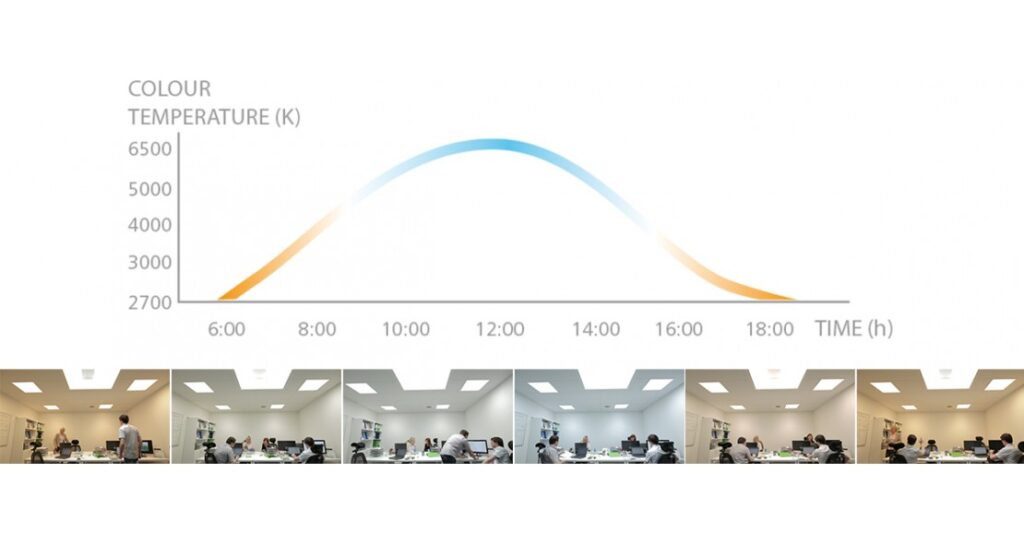
Verbesserung der Stimmung und der kognitiven Leistung
Natürliches Licht oder dessen künstliches Äquivalent durch hochkonzentriertes Licht (HCL) verbessert nachweislich die Stimmung, die Aufmerksamkeit und die kognitive Leistungsfähigkeit. In Innenräumen wie Büros und Klassenzimmern kann HCL eine lebendigere Atmosphäre schaffen, die zu erhöhter Konzentration, reduzierter Müdigkeit und einer allgemeinen Stimmungsaufhellung führt. Studien haben gezeigt, dass HCL die Produktivität um bis zu 20 % steigern und Fehler durch verbesserte Konzentration reduzieren kann. Helleres, kühleres Licht erhöht die Aufmerksamkeit und die kognitive Geschwindigkeit und ist daher ideal für Aufgaben, die intensive Konzentration erfordern. Wärmeres Licht hingegen kann eine beruhigende Umgebung schaffen, die Entspannung und kreatives Denken fördert. Die Implementierung von HCL an Arbeitsplätzen und in Schulen kann das psychische Wohlbefinden und die Leistungsfähigkeit der Mitarbeiter deutlich verbessern.
Linderung der saisonal abhängigen Depression (SAD)
In Regionen mit eingeschränkter Sonneneinstrahlung zu bestimmten Jahreszeiten kann HCL als therapeutische Intervention für Menschen mit SAD dienen. Durch die Simulation der aufmunternden Wirkung von natürlichem Sonnenlicht trägt HCL zur Verbesserung der Stimmung und des Energieniveaus bei und mildert die Auswirkungen der reduzierten Tageslichtexposition. Lichttherapie, eine gängige Behandlungsmethode für SAD, beinhaltet die Bestrahlung mit hellem Licht, typischerweise mithilfe einer Lichtbox. HCL-Systeme können ähnliche Vorteile bieten, indem sie kontrolliertes, hochintensives Licht Das natürliche Sonnenlicht wird nachgeahmt. Dies trägt zur Regulierung des zirkadianen Rhythmus bei und erhöht den Serotoninspiegel, was Symptome von Depressionen und Müdigkeit lindern kann. HCL bietet eine praktische und leicht zugängliche Lösung für Menschen mit SAD und verbessert ihre psychische Gesundheit in den dunklen Monaten.
Unterstützung für psychiatrische Einrichtungen
In psychiatrischen Einrichtungen kann HCL die Beziehung zwischen Mensch und Umgebung optimieren und so Wohlbefinden fördern. Durch eine menschenzentrierte Beleuchtungsgestaltung können diese Einrichtungen unterstützende Umgebungen schaffen, die die Stimmung und die kognitiven Fähigkeiten verbessern. HCL kann Unruhe und Angst bei Patienten reduzieren, indem es eine beruhigende und vorhersehbare Umgebung schafft. Licht kann die Hormonproduktion beeinflussen, die sich direkt auf Stimmung und Verhalten auswirkt. Durch den Einsatz von HCL können psychiatrische Einrichtungen Umgebungen schaffen, die die Heilung fördern, Stress reduzieren und die allgemeine Patientenzufriedenheit verbessern. Studien haben gezeigt, dass optimierte Beleuchtung den Medikamentenbedarf senken und Krankenhausaufenthalte verkürzen kann.
Anwendungen und Vorteile von Human-Centric Lighting
Aufgrund seiner Anpassungsfähigkeit eignet sich HCL für eine breite Palette von Anwendungen, die jeweils einzigartige Vorteile bieten.
Gesundheitspflege
Im Gesundheitswesen trägt HCL dazu bei, den Schlafrhythmus von Patienten zu regulieren, Ängste abzubauen und eine schnellere Genesung zu fördern. Studien haben gezeigt, dass Patienten, die HCL ausgesetzt sind, eine verbesserte Schlafqualität und erhöhte Wachsamkeit am Tag erfahren. Eine kontinuierliche, durch HCL angepasste Lichtexposition kann zudem die Dauer von Krankenhausaufenthalten deutlich verkürzen, indem sie den natürlichen Körperrhythmus synchronisiert, was für die Heilung entscheidend ist. Darüber hinaus kann HCL die Abhängigkeit von Schlafmitteln verringern und bietet einen nicht-pharmakologischen Ansatz zur Behandlung von Schlafstörungen. Durch die Integration dynamischer Beleuchtungssysteme können Gesundheitseinrichtungen eine angenehmere und therapeutischere Umgebung schaffen.
Ausbildung
In Bildungsräumen unterstützt HCL die akademische Leistung, indem es die Konzentration und das Erinnerungsvermögen der Schüler verbessert. Durch die Schaffung von Umgebungen, die natürliches Tageslicht imitieren, hilft HCL den Schülern, den ganzen Tag über konzentriert und engagiert zu bleiben. Eine angemessene Beleuchtung reduziert Augenbelastung und Kopfschmerzen, häufige Probleme in herkömmlichen Klassenzimmern, und führt zu besserer Anwesenheit und Beteiligung. Eine 2024 im „Journal of Educational Psychology“ veröffentlichte Studie ergab, dass Schüler in mit HCL ausgestatteten Klassenzimmern 151 TP3T bessere Testergebnisse erzielten und ein um 201 TP3T gesteigertes allgemeines Wohlbefinden berichteten. Dies unterstreicht den signifikanten Einfluss von HCL auf die Schaffung einer förderlichen Lernumgebung.
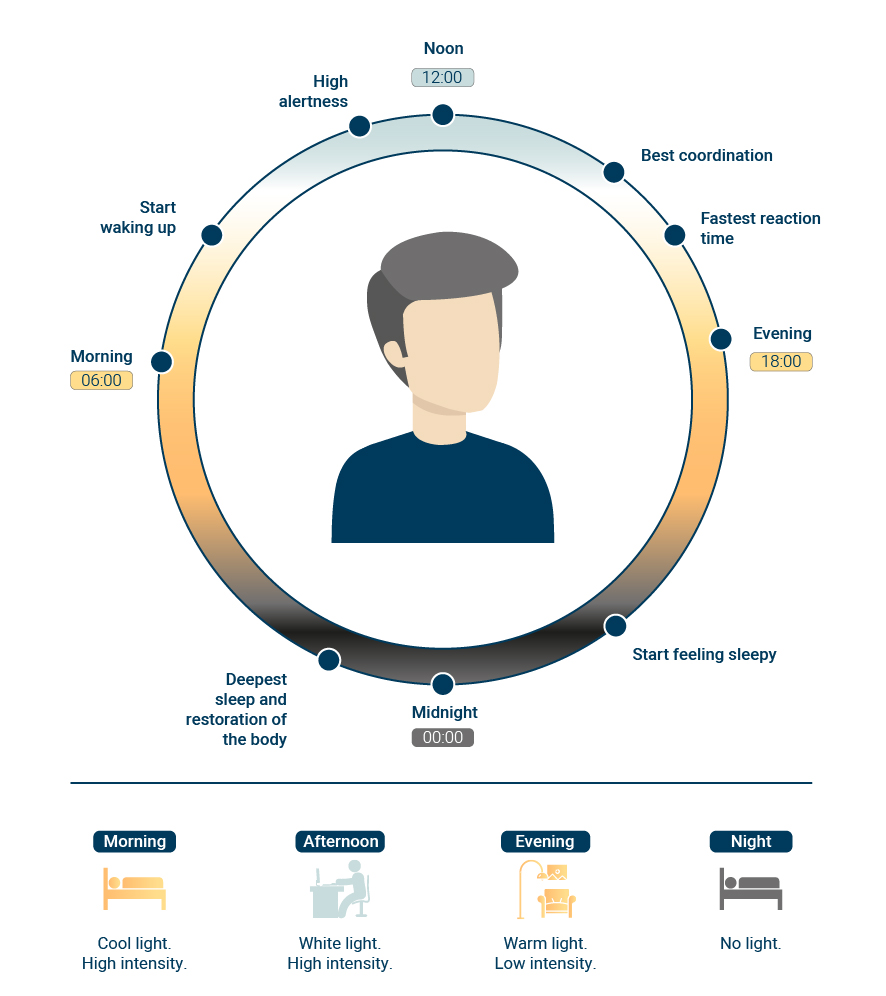
Privathäuser
In Privathaushalten kann HCL zur Gestaltung dynamischer Beleuchtungskonzepte eingesetzt werden, die auf verschiedene Aktivitäten abgestimmt sind. Beispielsweise kann helles, kühles Licht in der Küche in den Morgenstunden die Bewohner beleben, während warmes, gedämpftes Licht Im Wohnzimmer kann abends die Entspannung fördern. Smart-Home-Systeme mit integrierter HCL-Beleuchtung können die Beleuchtung automatisch an die Tageszeit oder Aktivität anpassen und so optimale Bedingungen ohne manuelle Anpassungen gewährleisten. Individuelle Beleuchtungseinstellungen lassen sich individuell anpassen, um Arbeit, Entspannung oder geselliges Beisammensein zu unterstützen und so das Gesamtambiente und die Funktionalität des Wohnraums zu verbessern.
Büros
In Büroumgebungen steigert HCL die Aufmerksamkeit, die kognitiven Funktionen und das allgemeine Wohlbefinden der Mitarbeiter deutlich und führt so zu höherer Produktivität. Durch die Nachahmung natürlicher Tageslichtmuster hilft HCL den Mitarbeitern, energiegeladen und konzentriert zu bleiben, reduziert die Nachmittagsmüdigkeit und steigert die Arbeitszufriedenheit. Studien haben gezeigt, dass Mitarbeiter in mit HCL ausgestatteten Büros von einer 30%igen Verringerung von Kopfschmerzen und Augenbelastung sowie einer 15%igen Produktivitätssteigerung berichten. Verbesserte Lichtverhältnisse fördern eine positivere und anregendere Arbeitsatmosphäre, reduzieren Fehlzeiten und erhöhen die Mitarbeiterbindung.
Die neuesten Fortschritte in der menschenzentrierten Beleuchtungstechnologie
Human-Centric Lighting (HCL) hat in den letzten Jahren bedeutende Fortschritte gemacht, angetrieben von technologischen Innovationen, die den Einfluss auf Gesundheit, Produktivität und Wohlbefinden des Menschen verbessern. Hier sind einige der neuesten Entwicklungen, die die Zukunft von HCL prägen:
Integration von Künstlicher Intelligenz (KI) und Maschinellem Lernen
Personalisierte Lichterlebnisse: KI und maschinelles Lernen ermöglichen es HCL-Systemen, die Lichtverhältnisse an Benutzerverhalten, Präferenzen und Umgebungsbedingungen anzupassen. Diese Personalisierung steigert Komfort, Produktivität und Energieeffizienz durch die Optimierung der Beleuchtung für bestimmte Aufgaben und Stimmungen. KI-Algorithmen analysieren Daten von Sensoren, Benutzereingaben und externen Quellen, um den Beleuchtungsbedarf proaktiv vorherzusagen und anzupassen. Diese Systeme lernen aus Benutzerinteraktionen, um die Beleuchtungseinstellungen zu optimieren und so eine Umgebung zu schaffen, die sich intuitiv maßgeschneidert anfühlt. KI kann außerdem die Beleuchtungsstärke anhand von Echtzeit-Umgebungsfaktoren wie Sonnenintensität und Raumbelegung überwachen und anpassen und so für konsistente und optimierte Lichtverhältnisse sorgen.
Intelligente Steuerung: KI-gesteuerte, intelligente Steuerungen können Beleuchtungsparameter wie Helligkeit und Farbtemperatur automatisch an die Tageszeit oder bestimmte Aktivitäten anpassen und so sicherstellen, dass die Beleuchtung stets den menschlichen Bedürfnissen entspricht. Diese Steuerungen nutzen prädiktive Algorithmen, um den Lichtbedarf anhand historischer Muster und Echtzeitdaten zu antizipieren. Beispielsweise kann das System morgens die Lichtintensität schrittweise erhöhen, um den Sonnenaufgang zu imitieren und so die Bewohner sanft zu wecken und ihre Wachsamkeit zu steigern. Ebenso kann das System abends das Licht dimmen und zu wärmeren Tönen wechseln, um den Körper auf den Schlaf vorzubereiten. KI-gesteuerte Steuerungen sorgen dafür, dass die Beleuchtung stets für Komfort und Wohlbefinden optimiert ist, ohne dass manuelle Anpassungen erforderlich sind.
Integration des Internets der Dinge (IoT)
Nahtlose Konnektivität: IoT-Technologie ermöglicht die Integration von HCL-Systemen in andere intelligente Gebäudesysteme wie HLK- und Sicherheitssysteme. Diese Integration ermöglicht ein ganzheitliches Gebäudemanagement, optimiert den Energieverbrauch und das Benutzererlebnis. IoT-Geräte kommunizieren miteinander und schaffen so ein einheitliches Ökosystem, das die Gebäudefunktionalität verbessert. Beispielsweise kann das Beleuchtungssystem mit dem HLK-System kommunizieren, um die Temperatur je nach Belegung und Tageszeit anzupassen. Das Sicherheitssystem kann bei Alarmen oder Notfällen spezifische Beleuchtungsszenarien auslösen und so für Sicherheit sorgen. Diese nahtlose Integration verbessert die gesamte Gebäudeumgebung und macht sie komfortabler, effizienter und sicherer.
Automatisierte Energieeffizienz: IoT-fähige Beleuchtung schaltet sich in unbesetzten Bereichen automatisch ab. Das reduziert Energieverschwendung und fördert Nachhaltigkeit. Sensoren erkennen die Belegung und passen die Beleuchtung entsprechend an. So wird sichergestellt, dass das Licht nur dann und dort eingeschaltet ist, wo es benötigt wird. Intelligente Algorithmen optimieren den Energieverbrauch, indem sie die Beleuchtung in Zeiten geringer Aktivität dimmen und in unbesetzten Bereichen vollständig ausschalten. Dieses automatisierte Energiemanagement senkt die Stromrechnung und minimiert die Umweltbelastung des Gebäudes. IoT-fähige Beleuchtung unterstützt Nachhaltigkeitsinitiativen und fördert einen verantwortungsvollen Energieverbrauch.

Fortschrittliche LED-Beleuchtungstechnologien
Farbabstimmung und -wiedergabe: Moderne LED-Beleuchtung Bietet eine hervorragende Farbwiedergabe und ermöglicht so eine präzisere Farbdarstellung. Diese Funktion ist entscheidend für die Gestaltung von Umgebungen, die natürliche Tageslichtmuster nachahmen, die Regulierung des zirkadianen Rhythmus unterstützen und die Stimmung verbessern. Hochwertige LEDs bieten ein volles Lichtspektrum und geben die Farben der Objekte in der Umgebung präzise wieder. Dies erhöht den Sehkomfort und reduziert die Augenbelastung, was Aufgaben erleichtert, die Präzision und Detailgenauigkeit erfordern. Eine präzise Farbwiedergabe ist besonders im Gesundheitswesen und im Einzelhandel wichtig, da die Farbwahrnehmung Diagnosen und Kaufentscheidungen beeinflussen kann.
Dynamische Lichtsteuerung: Moderne LED-Systeme können Farbtemperatur und -intensität dynamisch anpassen und so verschiedene Aktivitäten unterstützen – von konzentrierter Arbeit bis hin zur Entspannung. Sie ermöglichen einen nahtlosen Übergang zwischen verschiedenen Beleuchtungsszenarien und passen sich so den wechselnden Bedürfnissen der Nutzer an. Die dynamische Steuerung ermöglicht die Erstellung individueller Lichtstimmungen, die Produktivität, Kreativität und Wohlbefinden steigern. Nutzer können die Beleuchtungseinstellungen über mobile Apps oder Sprachbefehle anpassen und die Umgebung so ihren individuellen Wünschen anpassen. Dynamische LED-Beleuchtung bietet eine flexible und reaktionsschnelle Lösung für optimale Lichtverhältnisse in jeder Umgebung.
Integration in die Gebäudeplanung
Architektonische Innovationen: HCL wird zunehmend in die Architektur integriert. Der Schwerpunkt liegt dabei auf der Schaffung von Räumen, die die natürliche Belichtung verbessern und Tageslicht durch intelligente Steuerungen und Oberlichter simulieren. Architekten integrieren größere Fenster, Oberlichter und Lichtschächte, um die natürliche Lichteinstrahlung zu maximieren. Intelligente Steuerungen und automatisierte Beschattungssysteme optimieren die Nutzung des natürlichen Lichts und reduzieren so die Abhängigkeit von künstlicher Beleuchtung. Simulationswerkzeuge und Modellierungstechniken werden eingesetzt, um die Auswirkungen verschiedener Designentscheidungen auf die Lichtverhältnisse vorherzusagen und sicherzustellen, dass Gebäude so konzipiert sind, dass sie die menschliche Gesundheit und das Wohlbefinden fördern.
Benutzerzentrierte Bereiche: Durch die Integration von HCL in die Gebäudeplanung können Architekten Umgebungen schaffen, die sowohl ästhetisch ansprechend als auch gesundheits- und produktivitätsfördernd sind. Nutzerzentriertes Design konzentriert sich auf die Schaffung komfortabler, funktionaler und optisch ansprechender Räume. HCL spielt eine Schlüsselrolle bei der Verbesserung des Gesamterlebnisses, indem es optimale Lichtverhältnisse schafft, die Produktivität, Kreativität und Wohlbefinden fördern. Architekten arbeiten eng mit Lichtdesignern und Experten für Chronobiologie zusammen, um Umgebungen zu schaffen, die die Gesundheit fördern und die Lebensqualität der Bewohner verbessern.
Optimieren Sie Ihre Beleuchtung mit Radians Lighting
Radians Beleuchtung steht an der Spitze der Bereitstellung fortschrittlicher Beleuchtungslösungen, die auf die vielfältigen Bedürfnisse moderner Umgebungen zugeschnitten sind. Spezialisiert auf LED-DownlightsRadians bietet eine umfangreiche Produktpalette zur Verschönerung von Wohn- und Geschäftsräumen. Egal, ob Sie Einbaustrahler für einen eleganten, minimalistischen Look, Aufbau-Downlights für eine einfache Installation oder Mini-Downlights Für eine gezielte Beleuchtung bietet Radians Lighting die passende Lösung für jeden Bedarf.
Neben Downlights bietet Radians Lighting auch intelligente Beleuchtungsoptionen, LED-Schienenleuchten, Und LED-Leuchten für Klassenzimmer, wodurch sichergestellt wird, dass jeder Raum von einer optimierten und energieeffizienten Beleuchtung profitiert. Für diejenigen, die architektonische Details hervorheben möchten, bietet Radians eine Vielzahl von LED-Wandleuchten an, darunter sowohl im Freien Und Innenbereich Optionen, die Funktionalität mit Ästhetik verbinden.
Radians Lightings Engagement für Qualität und Innovation macht es zu einer ausgezeichneten Wahl für alle, die ihre Beleuchtungssysteme. Entdecken Sie ihre umfassendes Produktsortiment um die perfekten Beleuchtungslösungen zu finden, die Ihren spezifischen Anforderungen entsprechen.
Abschluss
Zusammenfassend lässt sich sagen, dass Human-Centric Lighting einen Paradigmenwechsel in unserer Lichtgestaltung darstellt. Durch die Abstimmung künstlicher Beleuchtung auf natürliche zirkadiane Rhythmen und individuelle Bedürfnisse bietet HCL eine ganzheitliche Lösung, die Gesundheit, Produktivität und die allgemeine Lebensqualität verbessert. Die Integration von KI, IoT und fortschrittlichen LED-Technologien erweitert die Möglichkeiten von HCL weiter und macht es personalisierter, effizienter und reaktionsschneller. Da wir den tiefgreifenden Einfluss von Licht auf die menschliche Gesundheit immer besser verstehen, wird HCL zweifellos eine immer wichtigere Rolle bei der Gestaltung unserer Lebens-, Arbeits- und Lebensräume spielen. Bei der Nutzung von HCL geht es nicht nur um die Beleuchtung von Räumen, sondern darum, Umgebungen zu schaffen, die das menschliche Wohlbefinden fördern und unser volles Potenzial entfalten.
FAQs
F1: Was ist Human-Centric Lighting und wie profitiert mein Alltag davon?
A1: Human-Centric Lighting (HCL) ist darauf ausgelegt, natürliche Tageslichtmuster nachzuahmen und so Ihren zirkadianen Rhythmus und Ihr allgemeines Wohlbefinden zu verbessern. Es passt Lichtintensität und Farbtemperatur im Tagesverlauf an, um morgens die Energie zu steigern und abends die Entspannung zu fördern. Dieser Ansatz fördert besseren Schlaf, bessere Stimmung und höhere Produktivität und eignet sich daher ideal für Wohnungen und Büros in ganz Europa, darunter Schweden, Dänemark und Großbritannien.
F2: Wie unterscheidet sich Human-Centric Lighting von herkömmlichen Beleuchtungslösungen?
A2: Im Gegensatz zu herkömmlicher Beleuchtung passt sich HCL dynamisch an Ihre biologischen Bedürfnisse an. Es nutzt fortschrittliche LED-Technologie und intelligente Sensoren, um ein gesünderes Raumklima zu schaffen. Dieser einzigartige Ansatz hebt sich von der Konkurrenz ab, indem er sowohl die visuellen als auch die nicht-visuellen Effekte des Lichts berücksichtigt und so ein angenehmeres und unterstützenderes Lichterlebnis gewährleistet.
F3: Ist Human-Centric Lighting nur ein Marketingbegriff oder bietet es echte gesundheitliche Vorteile?
A3: Humanzentrierte Beleuchtung ist nicht nur ein Marketingbegriff; sie bietet echte gesundheitliche Vorteile. Durch die Anpassung an Ihren natürlichen zirkadianen Rhythmus kann HCL die Schlafqualität verbessern, Stress reduzieren und die kognitive Leistung steigern. Es handelt sich um einen wissenschaftlich fundierten Beleuchtungsansatz, der das allgemeine Wohlbefinden fördert.
F4: Kann ich Human-Centric Lighting in mein Smart-Home-System integrieren?
A4: Ja, Human-Centric Lighting lässt sich in Smart-Home-Systeme integrieren. Viele HCL-Lösungen nutzen drahtlose Technologie und lassen sich über mobile Apps oder Sprachbefehle steuern. Dies ermöglicht eine nahtlose Integration mit anderen Smart-Geräten in Ihrem Zuhause.
F5: Wie kann ich sicherstellen, dass mein Human-Centric-Lighting-Setup energieeffizient ist?
A5: Um Energieeffizienz zu gewährleisten, sollten Sie HCL-Systeme mit LED-Technologie und intelligenten Sensoren wählen, um die Lichtnutzung je nach Belegung und Tageszeit zu optimieren. Diese Systeme verfügen oft über Funktionen wie automatisches Dimmen und Zeitplanung, die den Energieverbrauch deutlich senken und gleichzeitig eine angenehme und gesunde Lichtumgebung gewährleisten.



